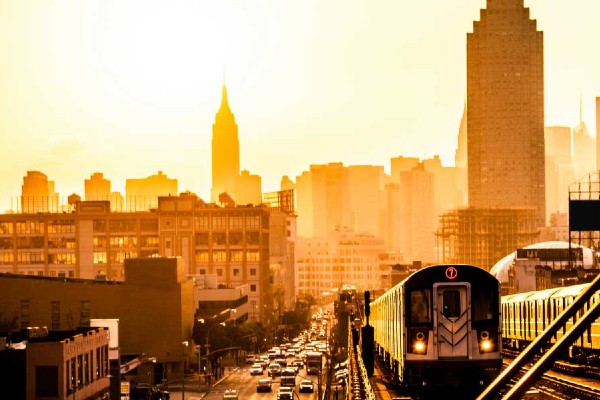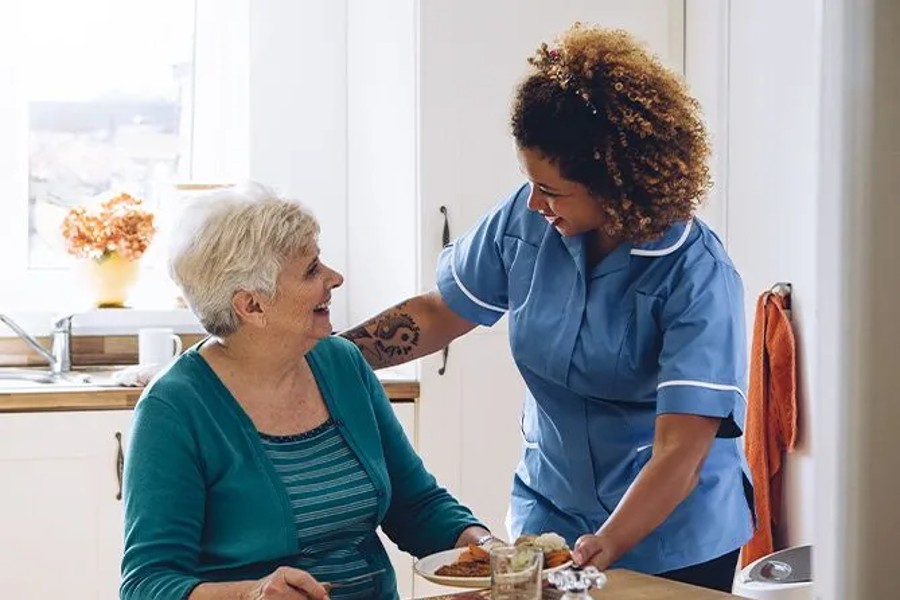
The Health Department today released the 2022 New York City Heat-Related Mortality Report, an annual report describing the toll that heat takes on the lives of New Yorkers.
The report shows that on average each year, there are approximately 370 heat-related deaths. These are comprised of an estimated 360 heat-exacerbated deaths, which happen when heat worsens existing chronic conditions such as heart disease, and 10 heat stress deaths, which are caused directly by heat. The average annual number of heat-related deaths represents about 2% of all deaths each warm season from May to September.
“As we continue our recovery from COVID-19, we must remain committed to addressing the health effects of a changing climate and warming planet, the impact of which is not borne equally,” said Health Commissioner Dr. Ashwin Vasan. “It’s critical that New Yorkers stay cool during heat events by using air conditioning, visiting a Cooling Center, or going to another cool place where they feel comfortable. Be a buddy – take care of one another as well by checking in on family, friends and neighbors to make sure they have a plan to keep cool.”
Approximately 100 heat-exacerbated deaths each year are attributable to the most extreme heat days (i.e., days that meet the National Weather Service extreme heat advisory threshold) based on statistical models.
The number of extreme heat days for NYC remained relatively constant from 2011-2019, while the number of non-extreme hot days, or days with temperatures below the heat advisory threshold but above 82°F, increased. These hot, but not extreme, heat days can also be dangerous.
While people may perceive less risk, there are more of these non-extreme heat days, so they are responsible for most of the estimated heat-exacerbated deaths.
Importantly, indoor temperature without air conditioning can be hotter than the outdoor temperature for which heat advisories are issued.
Heat-exacerbated mortality inequitably affects Black New Yorkers, reflecting the impacts of structural racism, which creates economic, educational, health care, housing, and other systems that systematically disadvantage Black New Yorkers.
Heat-exacerbated mortality is also higher in communities that have been historically disinvested.
The report provides data on heat stress deaths (those that occur when heat-related illnesses such as heat exhaustion and hyperthermia lead to death) from 2011-2020. On average each year there are 10 heat stress deaths.
Most of those who died were exposed to heat in their un-air-conditioned homes. Similar to heat-exacerbated deaths, Black New Yorkers and those who live in historically disinvested communities are inequitably affected.
NYC has taken steps to address the climate crisis and warming summers. In addition to providing substantial funding for air conditioning for low-income seniors in 2020, the City has invested in painting cool roofs, tree planting, and creating cool outdoor spaces where people can seek relief.
Eligible New Yorkers can also obtain free air conditioners, including installation, through the New York State Home Energy Assistance Program (HEAP); more information on eligibility and how to apply can be found here or by calling 311 and asking about the cooling assistance benefit.
The Be a Buddy Program has created hyperlocal networks in which community members volunteer to support and assist neighbors who may need assistance during extreme heat and other emergencies.
Through partnerships with Brooklyn Community Services (Brownsville), The Point Community Development Corporation (Hunts Point) and Union Settlement (East Harlem), Be A Buddy has provided assistance and support to over 1,300 New Yorkers through over 60 volunteers.
Volunteers help neighbors locate local resources, have a friendly voice to speak to, or help them prepare and implement an emergency plan.
Buddies surveyed reported the program has made them feel more supported and appreciated by their community and increased the quality of local relationships.
The Be A Buddy Program originated from Cool Neighborhoods NYC (PDF), a city-wide heat protection strategy, in partnership with the Mayor’s Office of Climate Resiliency.
Learn more about what the City is doing to mitigate the effects of heat at Cool Neighborhoods NYC.
More data and information about heat, climate, and health is also available on the Health Department’s Climate and Health Hub.
Become a Harlem Insider!
By submitting this form, you are consenting to receive marketing emails from: . You can revoke your consent to receive emails at any time by using the SafeUnsubscribe® link, found at the bottom of every email. Emails are serviced by Constant Contact








